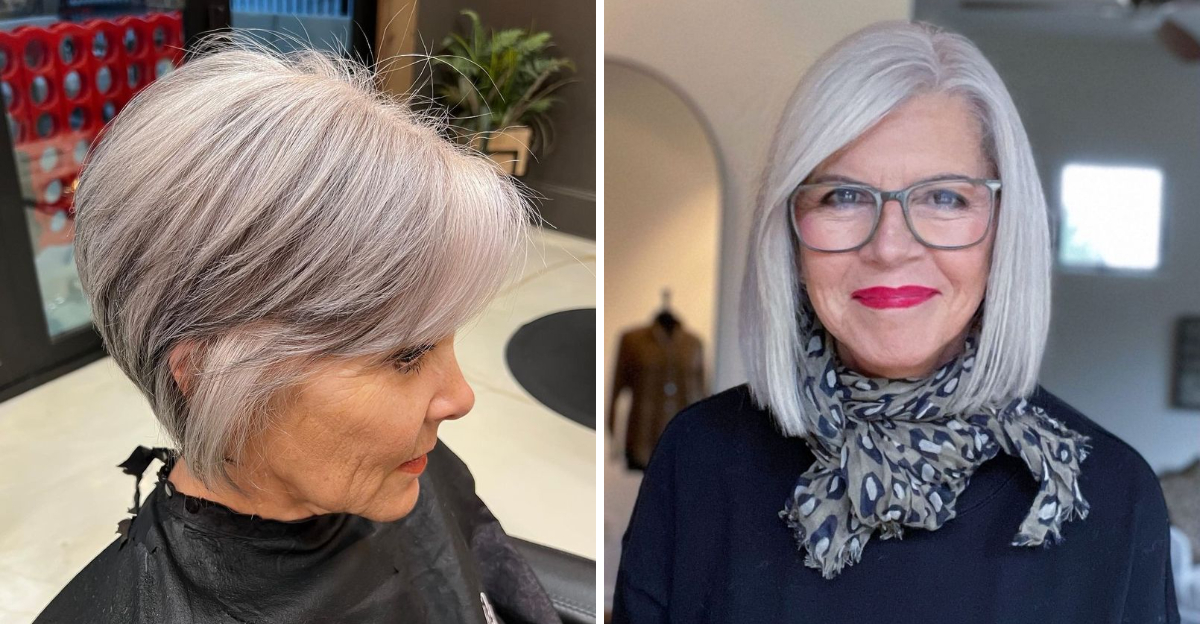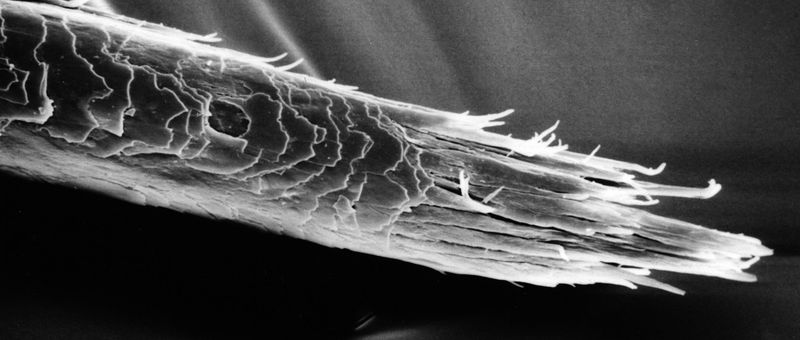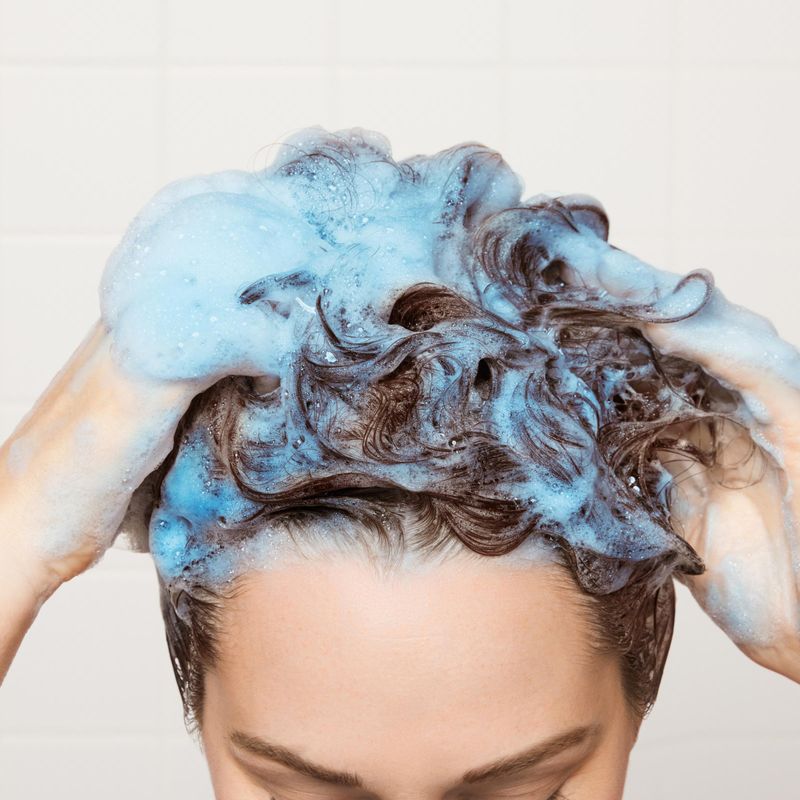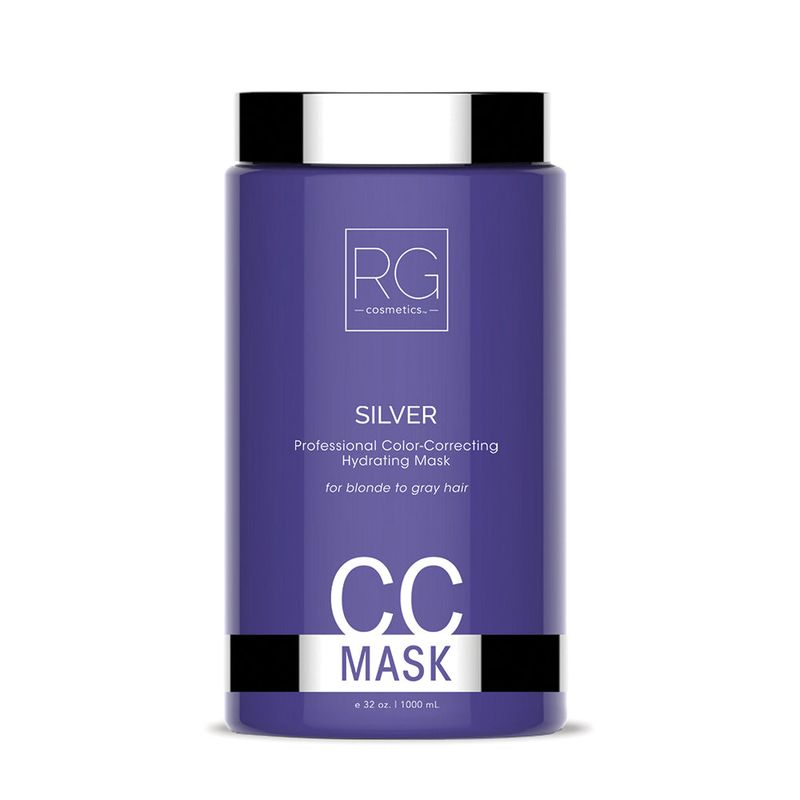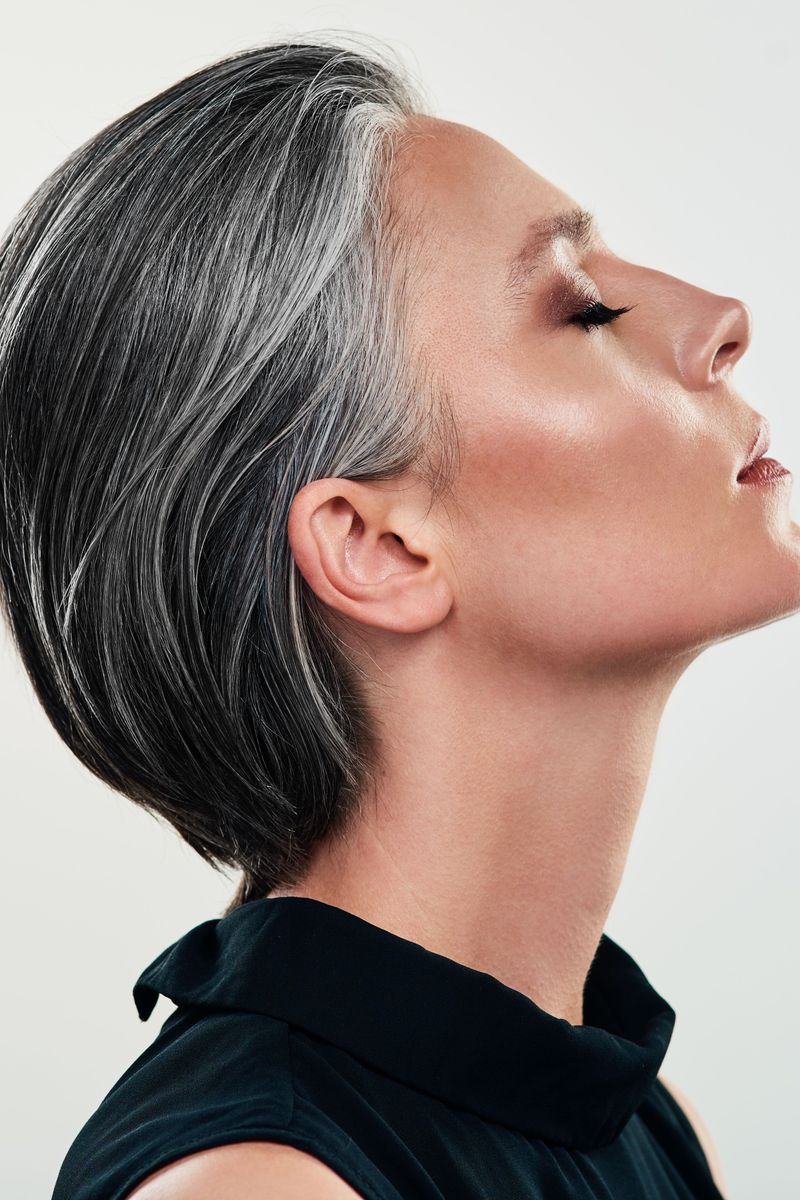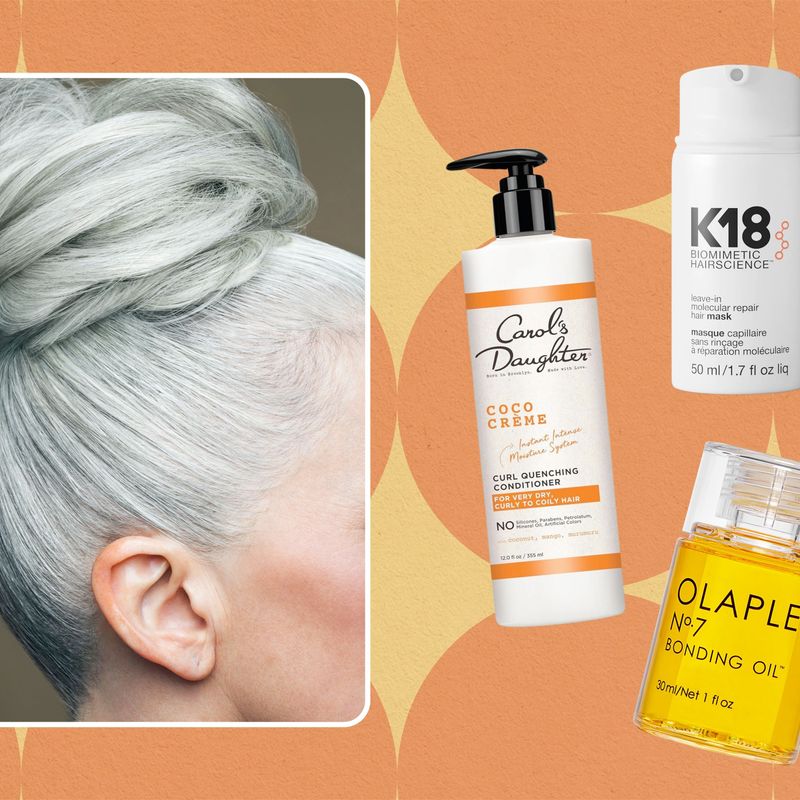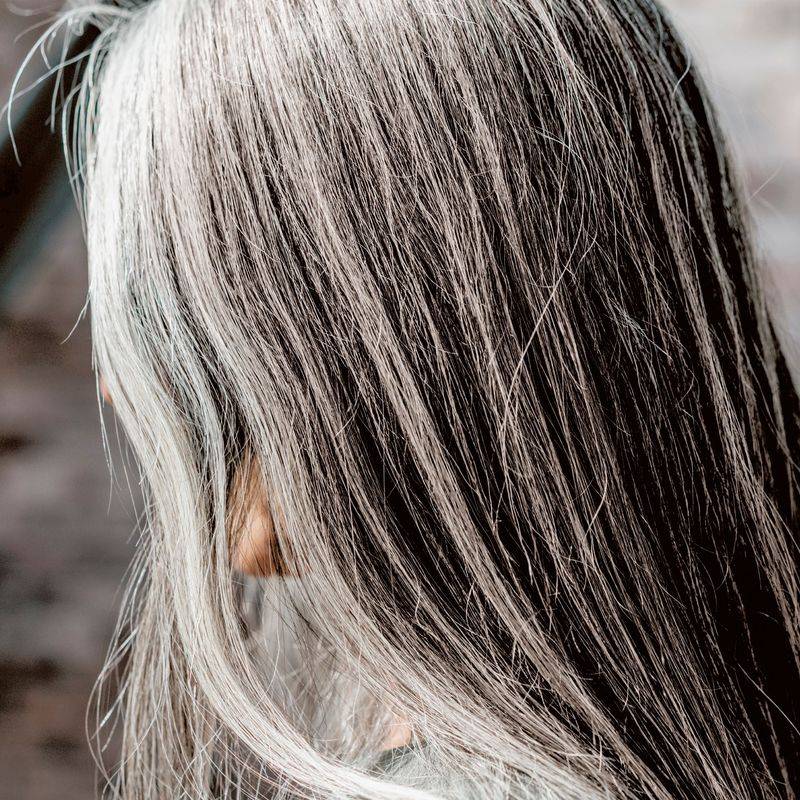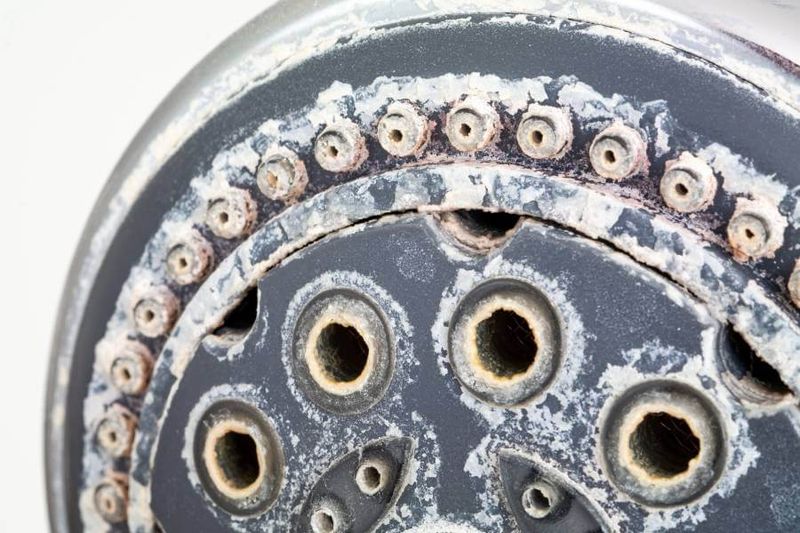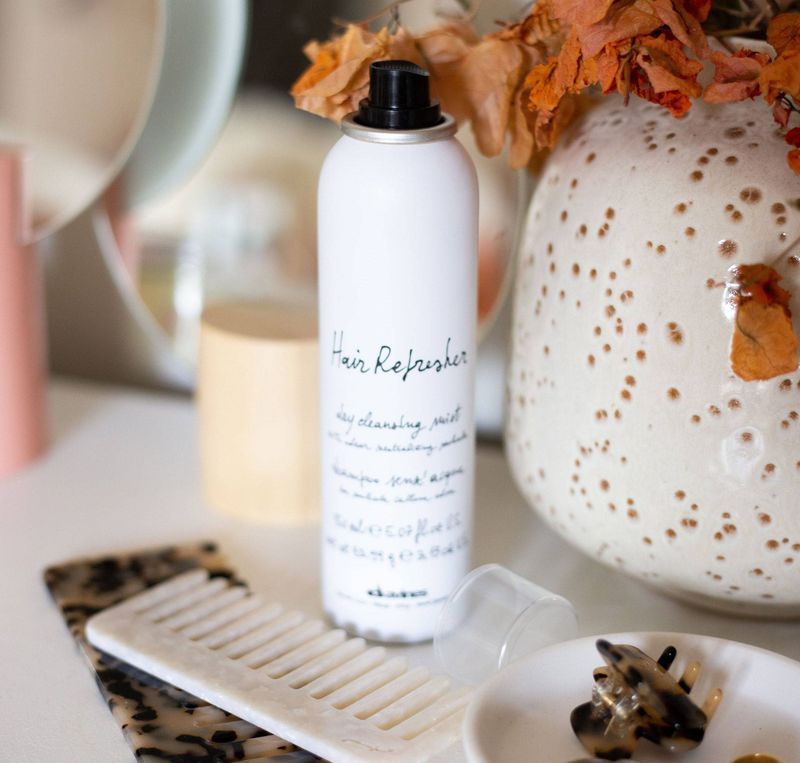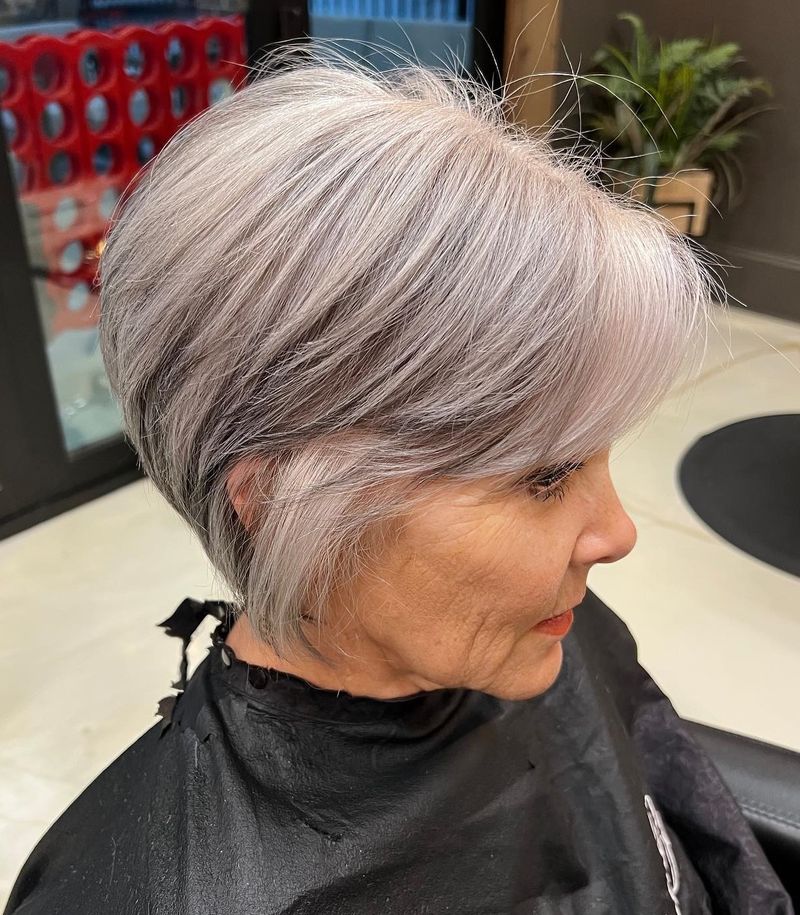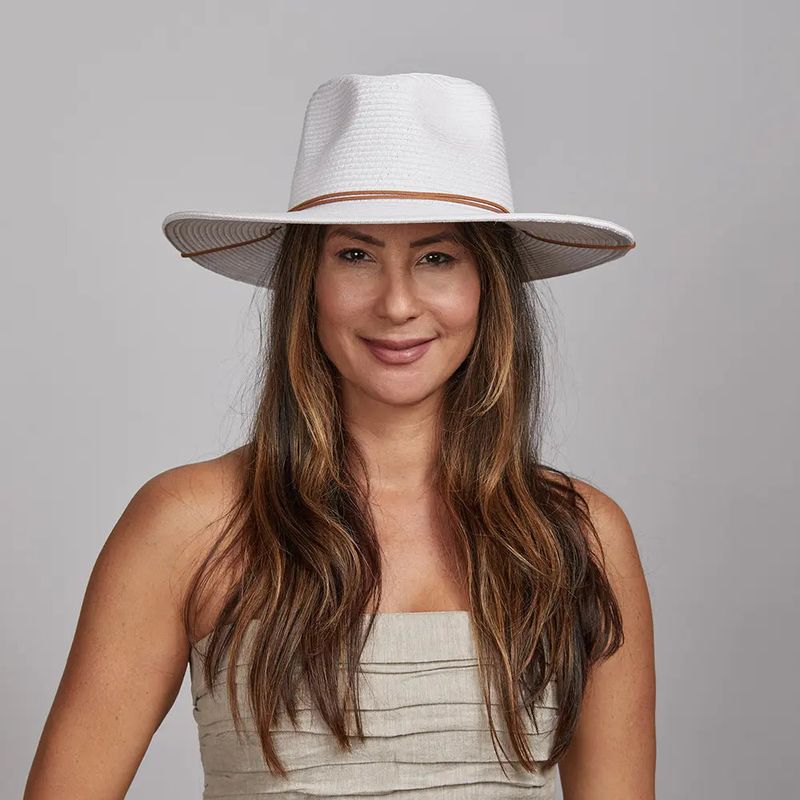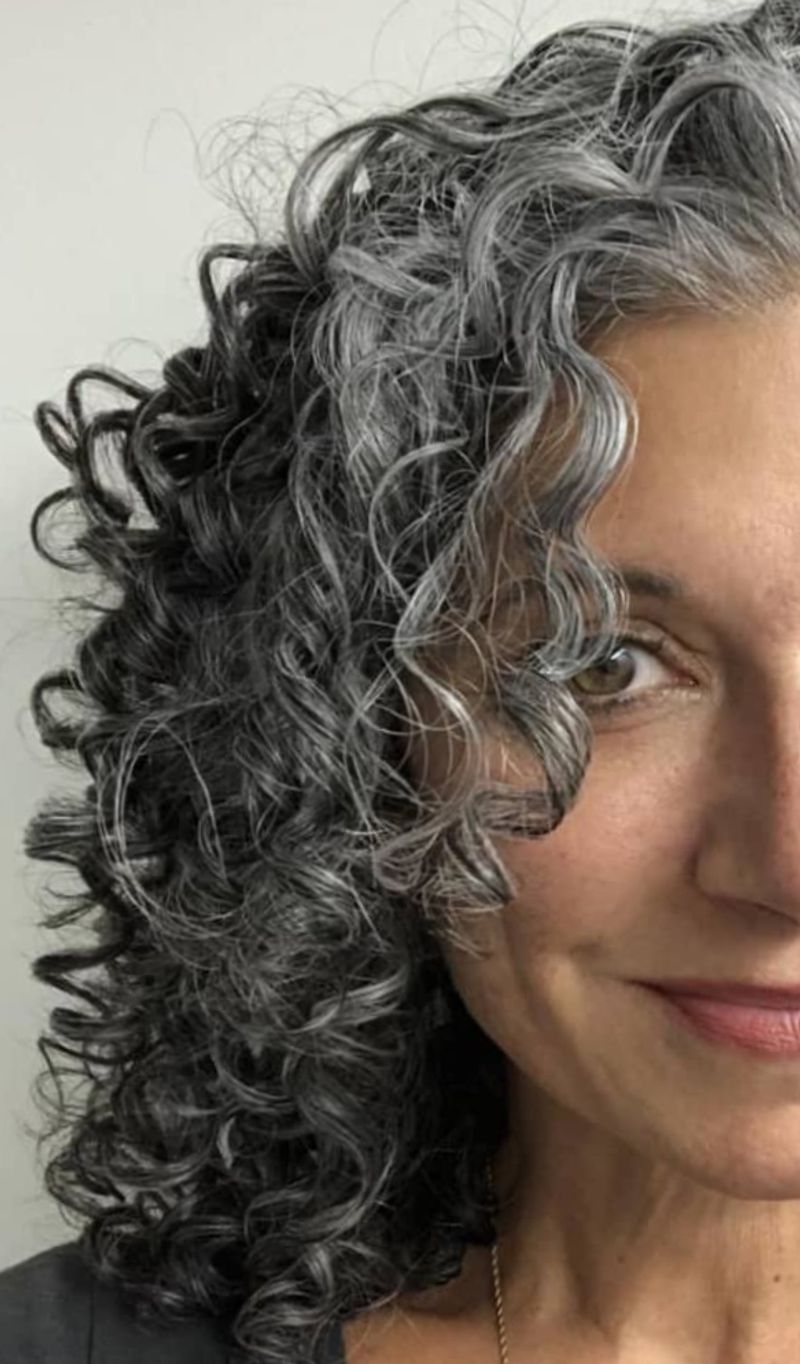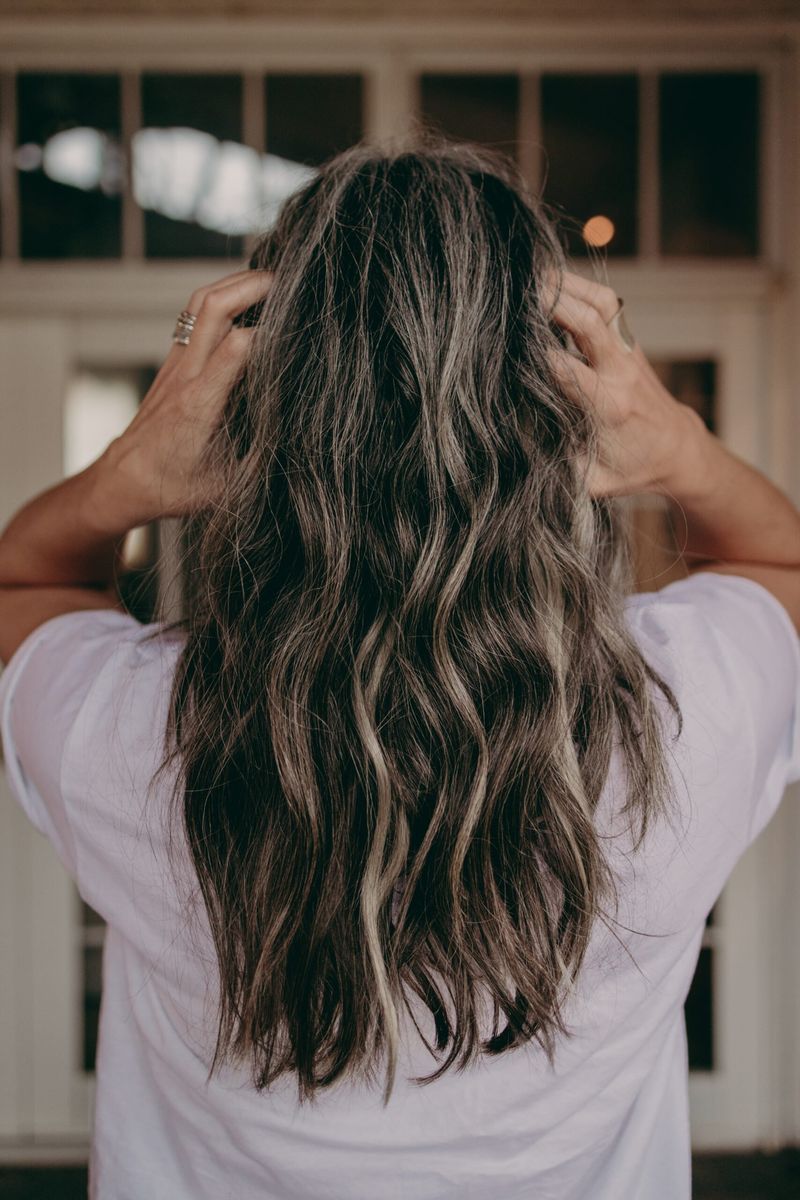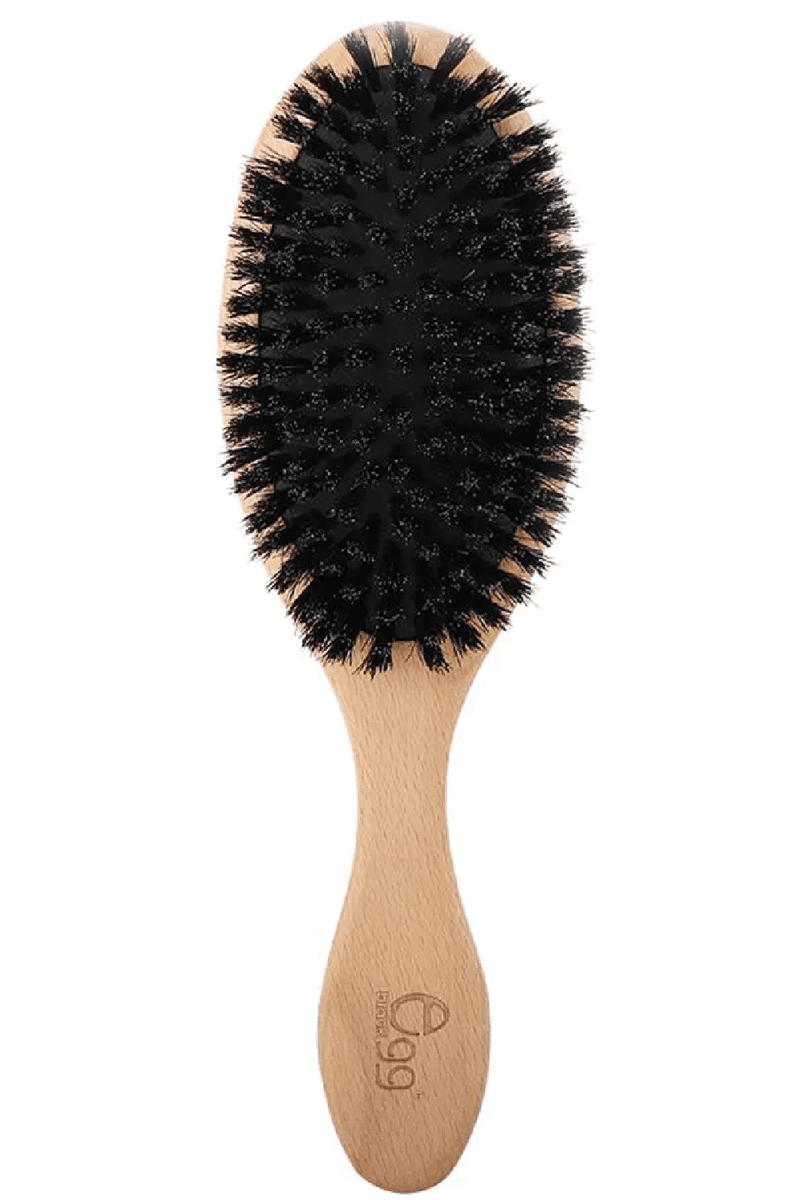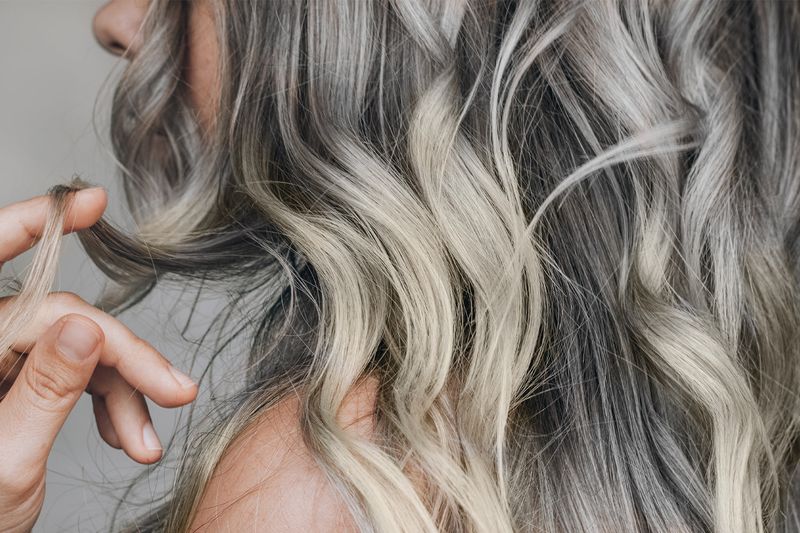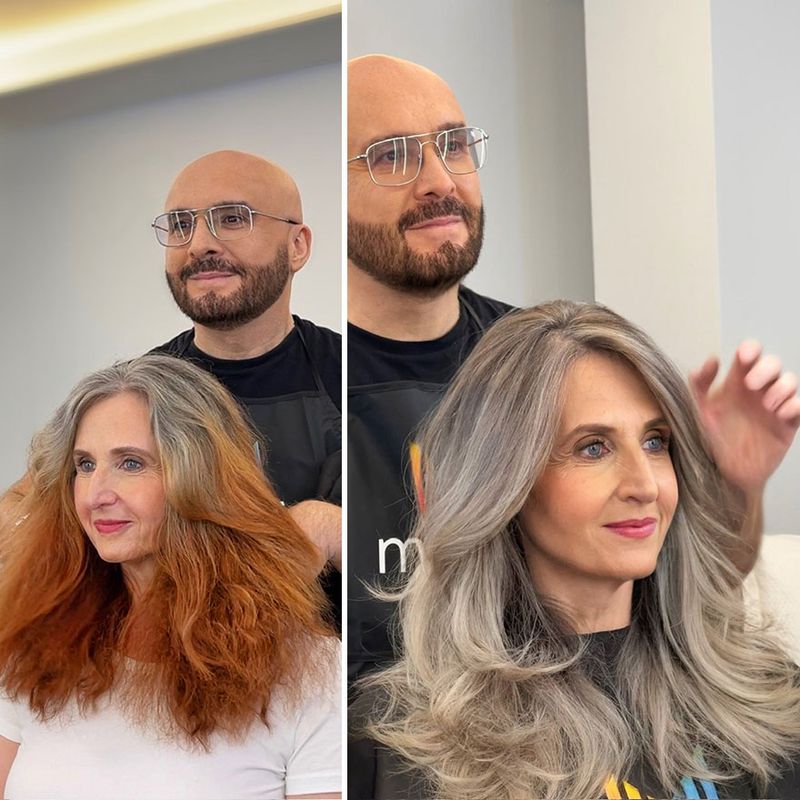Going gray is a natural part of life that many of us will face. Whether you’ve just spotted your first silver strands or have been rocking a full head of gray for years, caring for these unique hairs requires special attention. Let’s explore what truly works for keeping your silver mane looking its absolute best.
1. Why Gray Hair Has Different Needs
Gray hair lacks melanin, making it more susceptible to environmental damage and dryness. The structure changes too, becoming coarser and more wiry.
Embracing these differences is the first step toward proper care routines that actually work.
2. Purple Shampoo: Friend or Foe?
Purple shampoo counters yellowing by depositing violet pigments onto hair strands. Use it just once weekly to prevent over-toning or dryness.
Alternate with moisturizing shampoos to maintain balance between color correction and hydration.
Related: -7 Straight-Hair Problems No One Talks About And 8 Easy Fixes That Shine
3. Hydration Heroes for Thirsty Strands
Gray hair craves moisture more than pigmented hair ever did. Weekly deep conditioning treatments restore vital hydration and improve manageability.
Look for products containing hyaluronic acid, glycerin, or argan oil for best results.
4. Silicone-Free Styling: The Game Changer
Silicones create buildup that dulls gray hair’s natural shine over time. Opt for water-based styling products that rinse clean without residue.
Your gray will thank you with improved brightness and more natural movement.
5. Heat Protection: Non-Negotiable Step
Gray hair’s porous nature makes it especially vulnerable to heat damage. Always apply heat protectant before styling tools touch your strands.
Look for formulas specifically designed for coarse or aging hair for maximum protection.
6. Scalp Care Secrets Nobody Tells You
Healthy gray starts with a healthy scalp. Weekly exfoliation removes buildup that can dull appearance and block new growth.
Gentle scalp massages with rosemary or peppermint oil also stimulate circulation for stronger, shinier grays.
7. The Hard Water Dilemma
Mineral deposits from hard water can turn gray hair yellow or green. Installing a shower filter removes these damaging minerals before they reach your precious silver strands.
Monthly clarifying treatments also help remove existing buildup.
8. Oil Training: Rebalancing Production
Many people overwash gray hair, triggering excess oil production. Gradually extending time between washes retrains your scalp to produce less oil.
Dry shampoo can help during the transition period as your scalp adjusts.
9. Haircut Frequency That Makes Sense
Gray hair benefits from more frequent trims than pigmented hair. Schedule cuts every 4-6 weeks to prevent split ends that travel up the shaft.
This regular maintenance keeps your silver looking intentional rather than neglected.
10. UV Protection: The Forgotten Shield
UV rays quickly damage unprotected gray hair, causing yellowing and brittleness. Use products with UV filters or wear hats when outdoors for extended periods.
Some leave-in conditioners offer UV protection while simultaneously hydrating thirsty strands.
11. Nighttime Routines Worth Adopting
Cotton pillowcases create friction that damages gray hair’s cuticle. Switching to silk or satin dramatically reduces breakage and frizz by morning.
Loose braiding before sleep also prevents tangling for those with longer lengths.
12. Nutrition That Supports Vibrant Silver
What you eat directly impacts how your gray hair looks. Foods rich in B vitamins, copper, and zinc support strong, shiny strands.
Omega-3 fatty acids from fish or flaxseed also improve moisture retention in typically dry gray hair.
13. Embracing Natural Texture Changes
Gray hair often grows in with different texture than your original hair. Working with—not against—these changes saves time and frustration.
Consult with stylists who specialize in gray hair to find cuts that enhance your new texture.
14. The Transition Strategy That Works
Growing out dyed hair requires patience and strategy. Consider transitioning with highlights, lowlights, or a pixie cut to make the process less awkward.
Finding a colorist experienced with gray transitions can make all the difference.
15. Taming Resistant Gray Areas
Those stubborn wiry grays around temples and crown need special attention. Targeted deep conditioning and proper brushing techniques help manage these resistant strands.
Consider using a boar bristle brush to distribute natural oils to these typically drier areas.
16. Swimming Protection Protocols
Chlorine and salt water can quickly discolor gray hair. Wet hair with clean water before swimming to prevent absorption of pool chemicals.
Apply leave-in conditioner as an additional barrier, then rinse thoroughly immediately after swimming.
17. Makeup Colors That Complement Silver
Gray hair changes how colors look against your skin. Warmer makeup tones often balance cool silver strands beautifully.
Experiment with peach blushes, warm-toned lipsticks, and defined brows to create harmony with your new hair color.
18. When To Consider Professional Help
Not all gray hair issues can be solved at home. Persistent yellowing, extreme dryness, or uneven growth patterns may require professional intervention.
Regular consultations with a stylist experienced in gray hair can prevent problems before they start.

